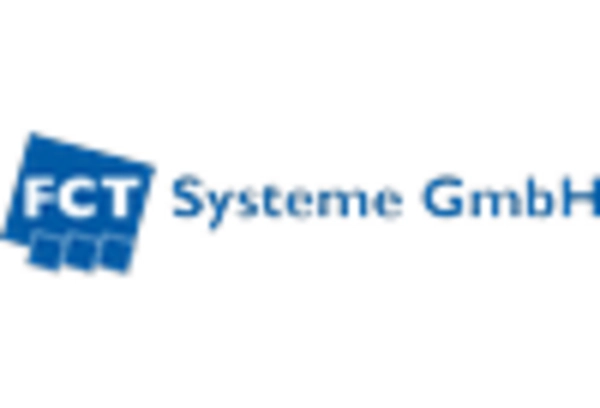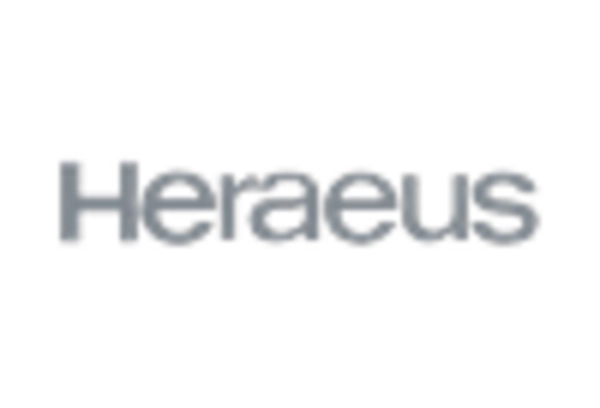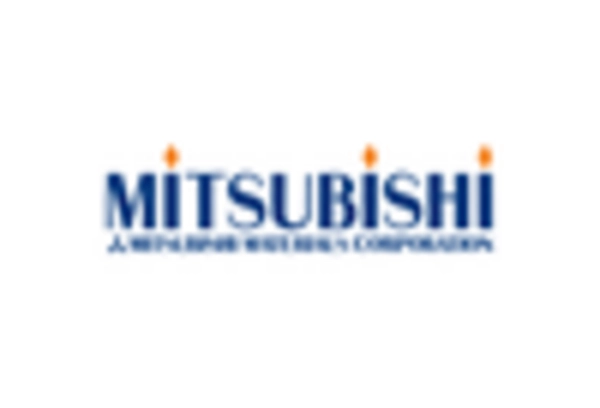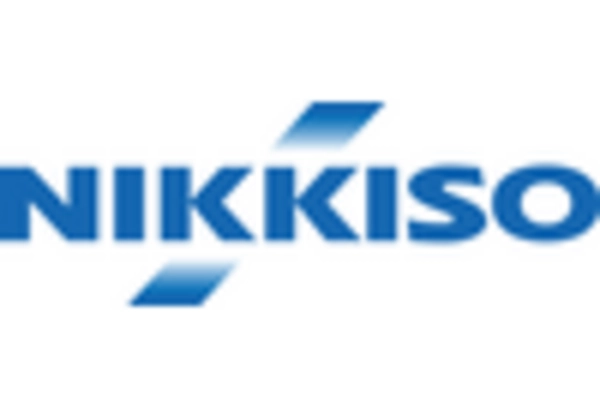Sustainability Initiatives
The Spark Plasma Sintering Market is increasingly influenced by sustainability initiatives aimed at reducing environmental impact. The process itself is known for its energy efficiency compared to traditional sintering methods, which is a significant advantage in a world that prioritizes eco-friendly manufacturing practices. Moreover, the ability to utilize recycled materials in spark plasma sintering contributes to waste reduction and resource conservation. As industries seek to align with sustainability goals, the demand for spark plasma sintering technology is expected to rise. Reports indicate that companies adopting sustainable practices are likely to see a 15% increase in market share, highlighting the potential for growth within the industry as it adapts to these changing consumer preferences.
Diverse Applications Across Industries
The Spark Plasma Sintering Market is characterized by its diverse applications across various sectors, including aerospace, automotive, and biomedical. This versatility is a key driver of market growth, as different industries seek advanced materials with superior properties. For example, in the aerospace sector, the demand for lightweight and high-strength materials is pushing manufacturers to adopt spark plasma sintering techniques. Additionally, the biomedical field is increasingly utilizing this technology for producing biocompatible implants and devices. Market analysis suggests that the aerospace and automotive sectors alone could account for over 40% of the total market share by 2026, underscoring the importance of diverse applications in driving the industry's expansion.
Rising Demand for High-Performance Materials
The Spark Plasma Sintering Market is witnessing a rising demand for high-performance materials, which is a crucial driver of market growth. Industries such as electronics, energy, and automotive are increasingly seeking materials that offer superior mechanical and thermal properties. Spark plasma sintering is particularly well-suited for producing such materials, as it allows for the consolidation of complex compositions with minimal defects. The market for high-performance materials is projected to reach USD 30 billion by 2027, with spark plasma sintering playing a pivotal role in meeting this demand. As manufacturers strive to enhance product performance and durability, the adoption of spark plasma sintering technology is expected to accelerate, further propelling the industry's growth.
Growing Investment in Research and Development
Investment in research and development within the Spark Plasma Sintering Market is on the rise, as companies strive to innovate and improve their product offerings. This trend is fueled by the need for advanced materials that meet the stringent requirements of modern applications. Increased funding for R&D initiatives is likely to lead to breakthroughs in material science, enhancing the capabilities of spark plasma sintering technology. Furthermore, collaborations between academic institutions and industry players are fostering knowledge exchange and accelerating the development of new techniques. It is estimated that R&D investments could increase by 20% over the next few years, significantly impacting the market landscape and driving competitive advantage.
Technological Advancements in Spark Plasma Sintering
The Spark Plasma Sintering Market is experiencing a surge in technological advancements that enhance the efficiency and effectiveness of the sintering process. Innovations in equipment design and control systems are enabling manufacturers to achieve superior material properties and reduced processing times. For instance, the integration of real-time monitoring systems allows for precise control over temperature and pressure, leading to improved product consistency. As a result, the market is projected to grow at a compound annual growth rate of approximately 8% over the next five years, driven by these advancements. Furthermore, the development of new materials suitable for spark plasma sintering is expanding the range of applications, thereby attracting investments and fostering competition within the industry.


















Leave a Comment